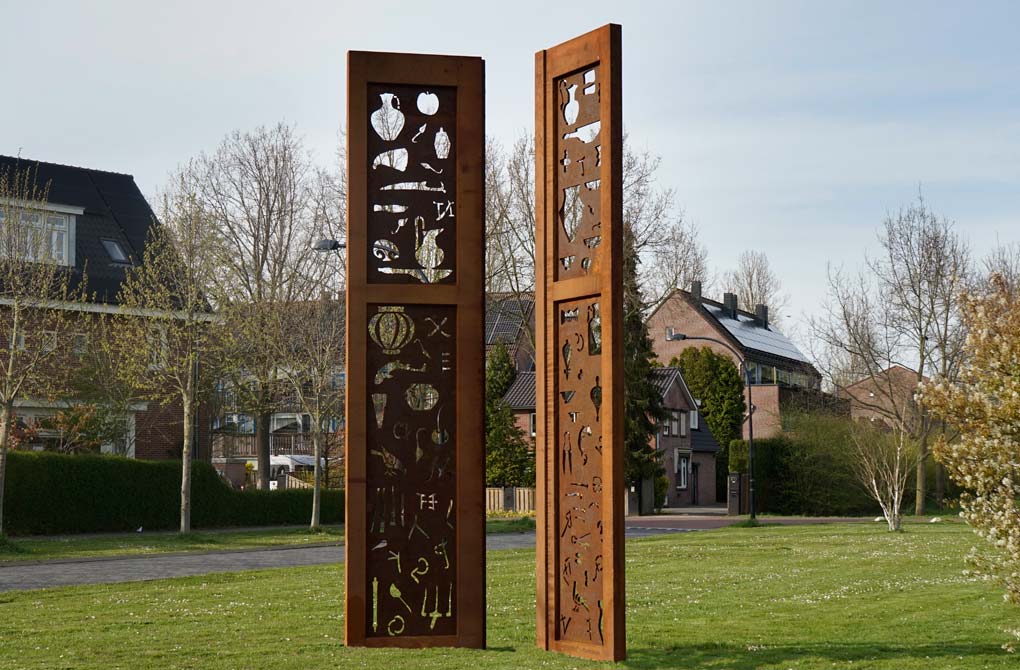Forës (photo Erik van 't Hullenaar )
The concept is titled "Forës", Latin door. The door leaves are open and transparent due to the counter-shapes of the found artifacts. It is made of Corten steel and is about 4.7 meters high. "Forës" is founded on a concrete slab. I have used archeology and architecture as a source because the wealth of the grave goods gives the impression that a Roman villa once stood. And most likely the northernmost of the Roman Empire.
The door leaves are described by the Roman architect (85 - 20 BC) Vitruvius in his book "De architectura libri decem". It is one of the most important sources on architecture from Greco-Roman antiquity. Part of this is the description of doors. In the design they are Roman temple doors. It represents the desire, I imagine, of the inhabitants of that time to build a temple. The frame of the door wings is the landscape.
|
|
Artifacts
Archeology makes the landscape readable. Forës has been opened up with, among other things, the archaeological artefacts that have been excavated in Loovelden. Years later, these man-made objects tell a hidden story of the former inhabitants. The contours of a number of grave goods such as pitchers, jugs and scissors are carved into the door wings and can be recognized. I augmented these with items such as buttons, farming tools and food (Garum - fish sauce) that I believe have been used but not excavated or decayed over time. In addition, I have put Latin letters on it because written sources exist from Roman times. Further research will provide greater insight and new visual material.
|
|
Why corten steel?
Corten steel is a metal alloy of iron with copper, phosphorus, silicon, nickel and chromium. The rust-colored and very dense subcutaneous tissue shields the deeper material from oxygen. This greatly slows down the
oxidation. The oxide layer makes painting superfluous.
Link(dutch language) to a three minute presentation of the Forës design on YouTube. |
|
Place
Plaza Huissen. The Föres statue is part of the 57 km long Betuwe Unesco route
. |

